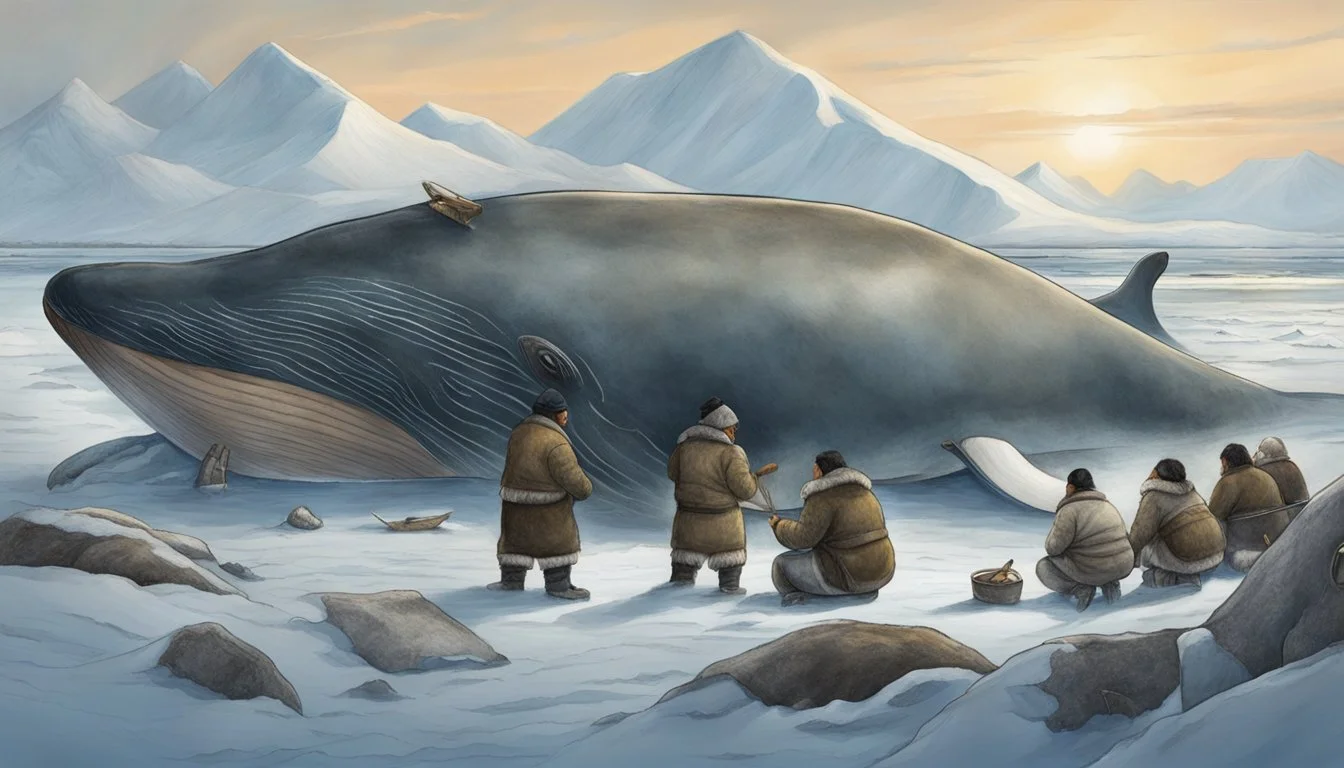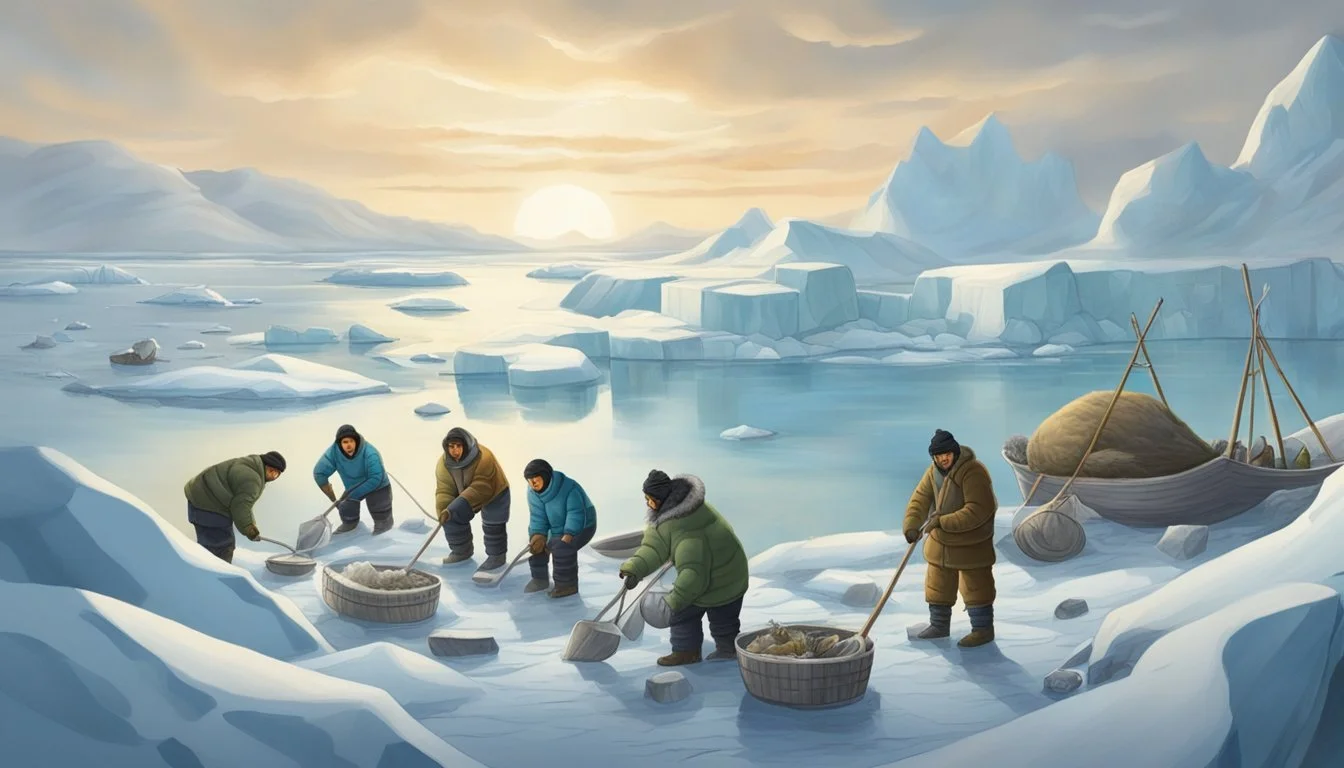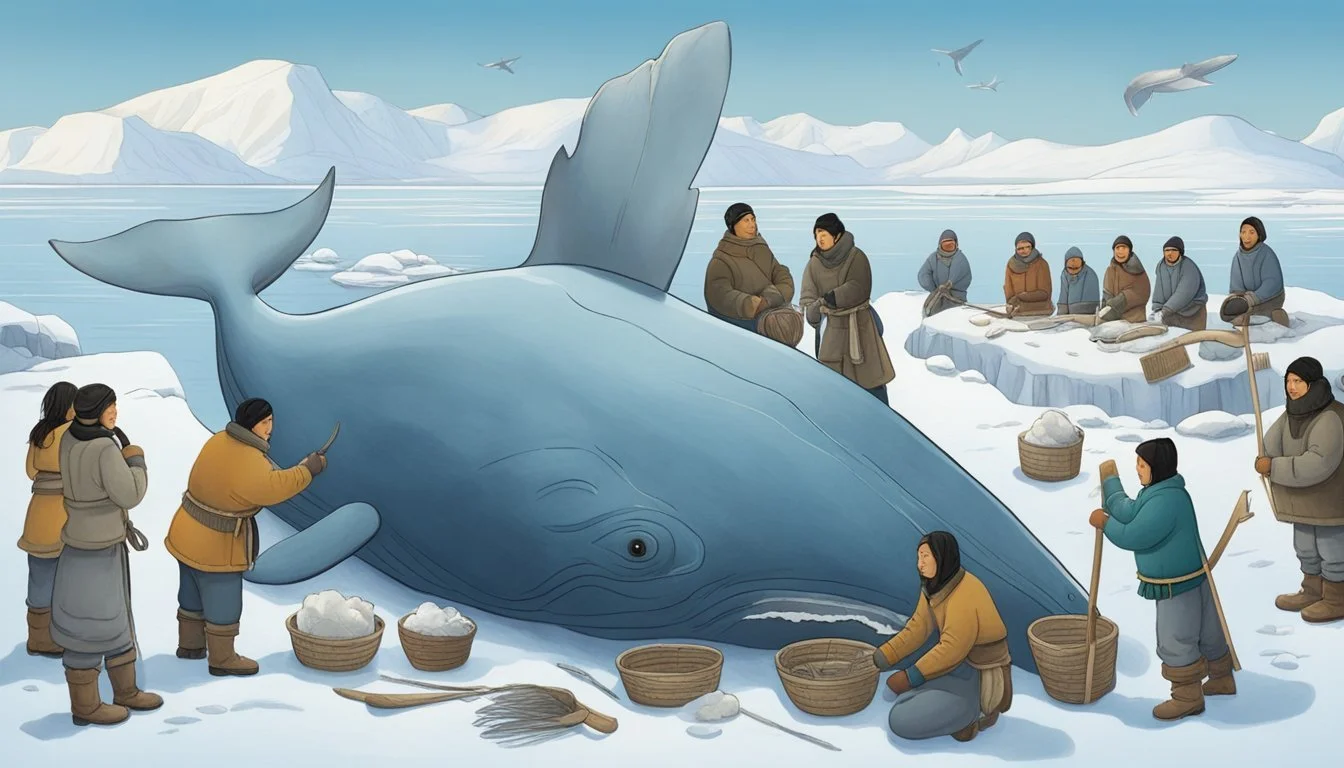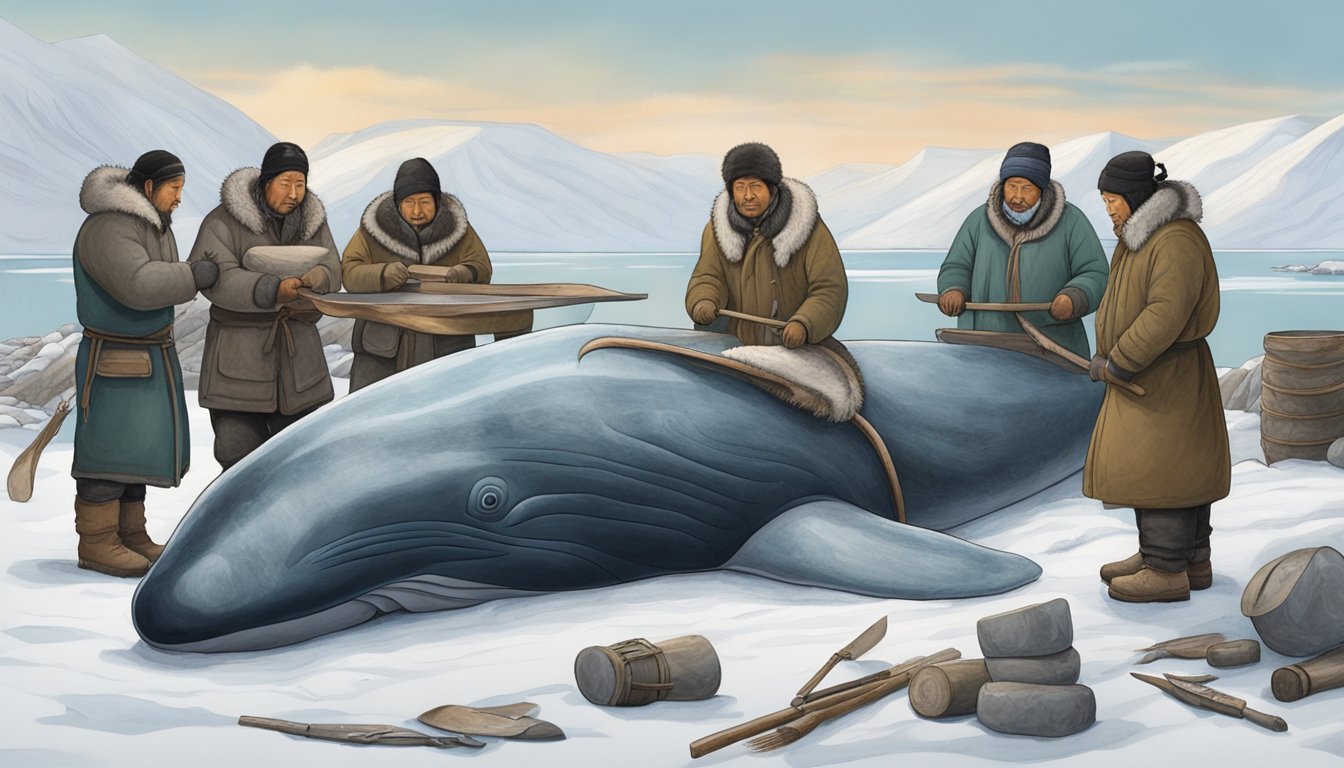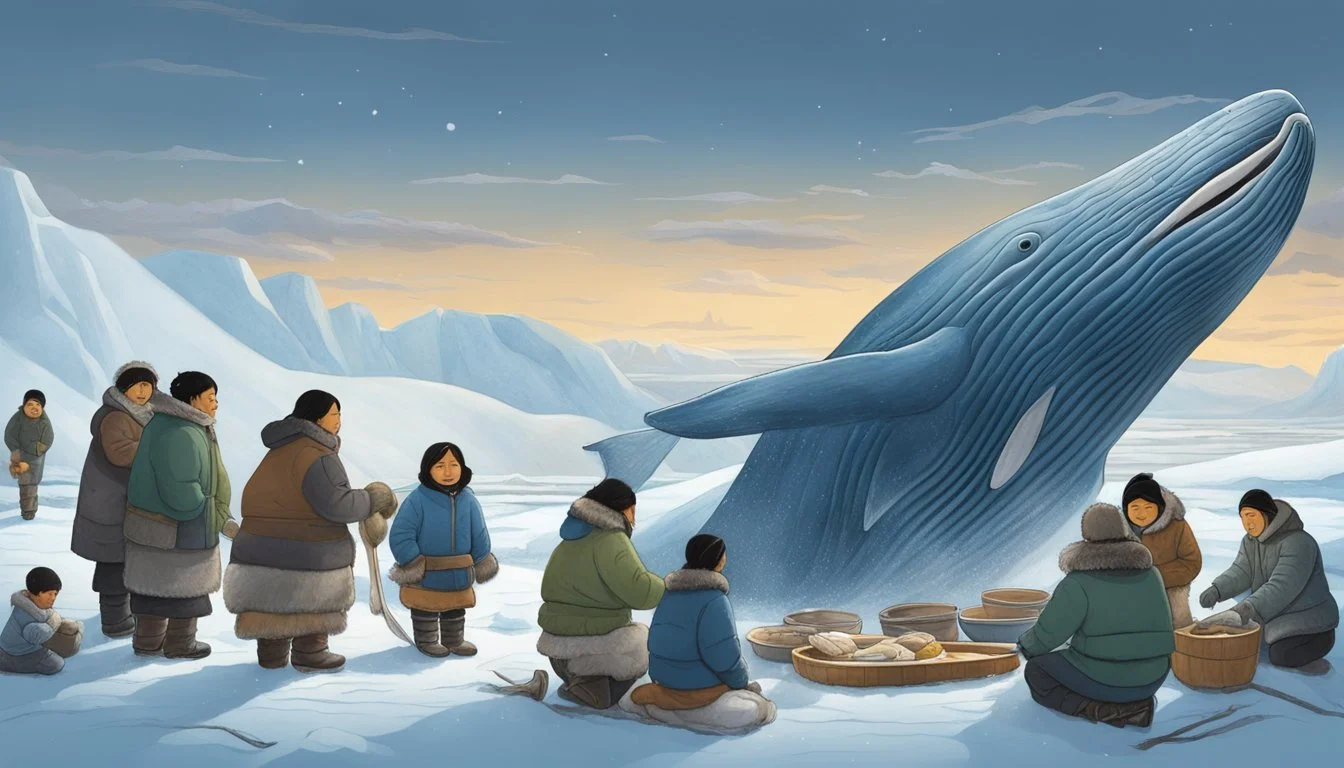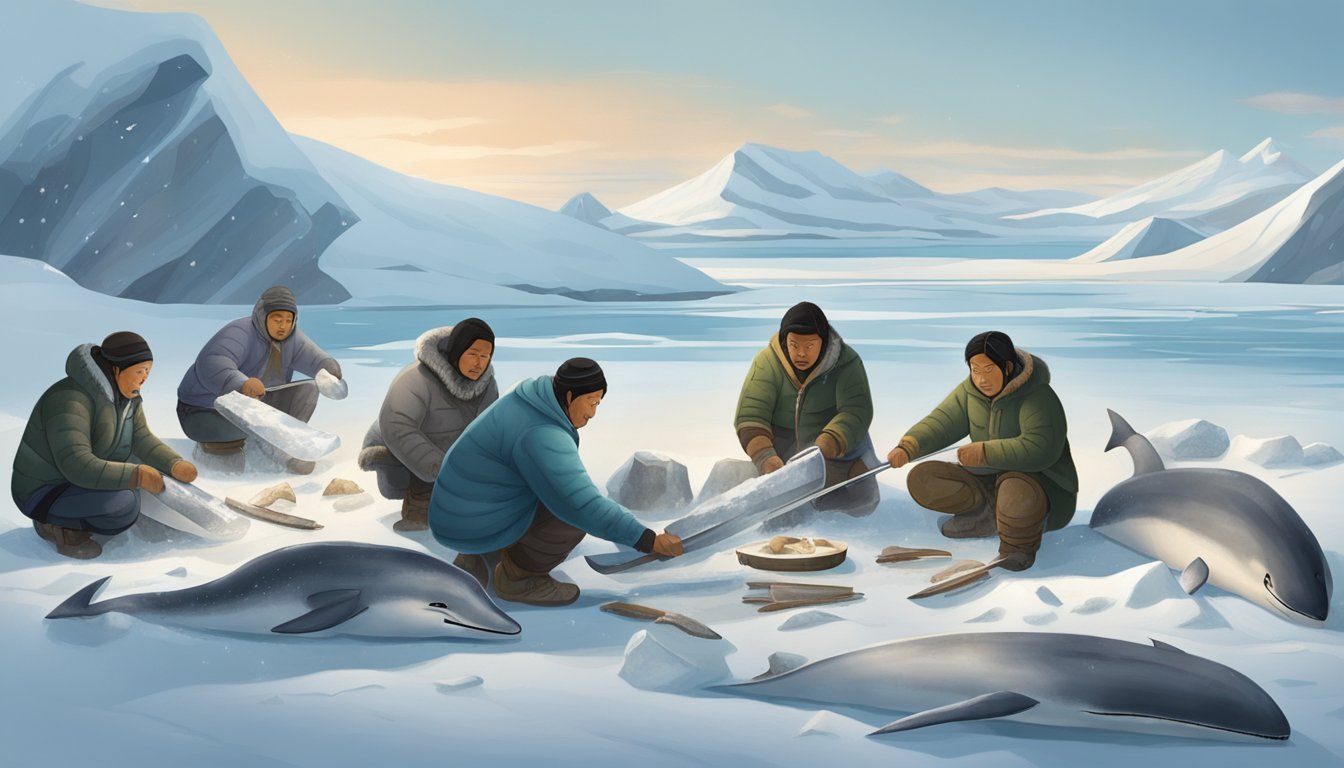Muktuk Unveiling the Cultural Significance of Inuit Whale Blubber Cuisine
Muktuk is a traditional Inuit dish that has been an intrinsic part of the Arctic indigenous communities for generations. This dish is essentially made from the skin and blubber of whales, most notably the bowhead, beluga, and narwhal. It stands out not just for its unique taste and texture but also for the cultural significance it holds among the Inuit people. Consumed raw, cooked, frozen, or even pickled, muktuk offers not only sustenance but a deep connection to the Inuit way of life, reflecting their resourcefulness and respect for the animals they harvest.
The nutritional value of muktuk is high, especially in vitamins A, D, and E, as well as omega-3 fatty acids, which are essential in the cold, harsh environments where fruits and vegetables are scarce. Its preparation is straightforward yet holds ritualistic meaning; the skin and blubber are cut into bite-sized pieces, sometimes scored to ease consumption. For the Inuit, utilizing every part of the whale is a practice of respect and sustainability, ensuring that no part of the animal is wasted.
As a dish rich in history, muktuk is more than food; it is a symbol of survival, identity, and community. It encompasses the Inuit tradition of sharing and celebration, often being served during communal gatherings. The dish represents a key element of the subsistence lifestyle still practiced in many Arctic regions, linking the past with the present as the Inuit continue to honor their ancestral heritage through the consumption and preparation of muktuk.
Historical Context and Cultural Significance
Muktuk has been an essential part of Inuit culture, embodying both sustenance and tradition. This section delves into how it has evolved and sustained its significance over time.
Origins of Muktuk in Inuit Culture
Muktuk, the traditional Inuit dish of whale skin and blubber, has roots deeply anchored to the survival and customs of the Indigenous peoples of the Arctic. It represented a critical source of vitamins and calories, especially vitamin C, which prevented scurvy during the long, sunless winters. The Inuit have depended on muktuk for centuries, utilizing every part of the whale to respect the animal and ensure food security in the harsh environment they inhabit.
Muktuk in the 19th Century
By the 19th century, muktuk had become a well-established component of the Inuit diet and had gained the attention of European explorers and whalers. While it was a curiosity to outsiders, for the Inuit, muktuk continued to be a treasured and necessary part of their diet. It was during this time that trading between Inuit communities and incoming settlers resulted in the broader distribution of muktuk, even as traditional practices were increasingly under pressure from outside influences.
Cultural Preservation and Adaptation
The Inuit have worked to preserve their culinary heritage, including muktuk, amidst numerous challenges. From the historic restrictions imposed on whaling to contemporary environmental issues and cultural assimilation pressures, they have adapted their traditions to maintain their cultural identity. The act of preparing and consuming muktuk is not merely about sustenance but also serves as a profound cultural practice, linking the Inuits to their ancestors and the environment, and maintaining a sense of community and identity.
Muktuk Preparation and Consumption
In the traditional Inuit diet, muktuk—a dish consisting of whale skin and blubber—is not only a source of sustenance but a symbol of respect towards the marine giants. This section dissects the processes of muktuk preparation and its unique culinary aspects.
Traditional Methods of Harvesting
Inuit hunters use specialized tools and techniques to harvest whales such as the beluga and bowhead, adhering to ancient practices passed down through generations. Hunting for these whales is carried out during specific seasons when the sea ice allows access. Following a successful hunt, utilitarian efficiency dictates the extraction of muktuk, with meticulous care taken to honor the animal by using as much of it as possible.
Recipes and Serving Techniques
The recipe for muktuk is straightforward, focusing on the raw, essential quality of the meat:
Cutting: Skin and blubber are sliced into bite-size cubes.
Serving: Typically eaten raw, muktuk may also be enjoyed frozen, pickled, or fried.
In some iterations, muktuk is deep fried and served with soy sauce, while other variations see it being pickled. It is a versatile component in Inuit cuisine, with preparation methods sometimes varying among communities.
Acquired Taste and Flavor Profile
Muktuk's flavor profile is often described as nutty and oily, with the whale skin providing a chewy contrast to the softer blubber. First-timers may find muktuk to be an acquired taste due to its unique flavor and texture. Yet, those familiar with this delicacy appreciate it for its rich nutritional content, including vital vitamins and omega-3 fatty acids.
Nutritional Information
Muktuk, as a traditional Inuit food, boasts significant nutritional value due to its composition of vitamins, fatty acids, and other nutrients.
Vitamins and Health Benefits
Muktuk is a rich source of various vitamins that contribute to overall health. In particular:
Vitamin C: Its presence in muktuk is notable because fresh fruits and vegetables—which are primary sources of Vitamin C—are often scarce in Arctic regions. Vitamin C is crucial for the prevention of scurvy, boosts the immune system, and serves as an antioxidant.
Vitamin A & D: These fat-soluble vitamins are present in muktuk and are essential for maintaining good vision, healthy skin, and bone growth. Vitamin D is also synthesized through sunlight exposure, but muktuk provides an additional source in the low-sunlight conditions of the Arctic.
Omega-3 Fatty Acids and Heart Health
The fatty composition of muktuk is particularly high in:
Omega-3 Fatty Acids: These are polyunsaturated fats that are vital to cardiovascular health. They help to reduce inflammation and are linked to a lower risk of heart disease.
Benefits to Heart Health include:
Reduction in triglycerides and blood pressure
Slowing the development of plaque in arteries
Including omega-3 fatty acids as part of a balanced diet contributes to heart health and overall well-being. Muktuk provides a significant amount of these beneficial fats, making it a valuable component of the Inuit diet.
Socioeconomic Aspects
Muktuk has played an essential role in the Inuit's social and economic fabric, symbolizing both a subsistence lifestyle and the evolving challenges within the Arctic communities.
Subsistence Hunting and Community
Subsistence hunting remains a cornerstone of life across many Inuit communities. Harvesting whale for muktuk not only provides substantial nourishment but also represents a profound cultural activity that fosters community cohesion. Elders are instrumental in teaching younger generations the traditional methods of whaling, ensuring that skills and knowledge are passed down. Subsistence practices inherently support community survival and have done so for generations.
Modern Challenges and Conservation
In recent times, Inuit communities face growing socioeconomic pressures, balancing traditional practices with conservation efforts. Whaling, including the harvest of muktuk, is regulated to maintain whale populations. Inuit communities work alongside conservation authorities to ensure sustainable practices. These modern challenges underscore the need to find an equilibrium between economic necessity and the survival of marine wildlife—a critical issue in today's discourse on indigenous rights and ecological stewardship.
Geographic and Environmental Factors
Muktuk, a traditional Inuit food, is deeply embedded in the geography and environment of the Arctic. It's not only a source of sustenance but also integral to the cultural identity of Arctic communities.
Muktuk in Arctic Regions
Muktuk is primarily found in Arctic regions such as Alaska, Canada, Greenland, and Siberia, where indigenous populations make use of local resources. In these areas, traditional hunting practices are passed down through generations, ensuring the sustainability of species and respect for the environment. The prevalence of muktuk is high particularly due to the abundance of whale species like the bowhead, beluga, and narwhal found in adjacent waters like the Beaufort Sea and the Bering Sea.
In the context of specific regions:
Alaska: Subsistence whaling is a vital part of life for the Inupiat.
Canada: Various Inuit groups practice whaling, and muktuk remains a staple food.
Greenland: The indigenous Inuit consume muktuk, which is also part of the local economy.
Siberia: Indigenous peoples hunt whales under international guidelines for subsistence needs.
Impact of Climate and Ice
Climate and ice conditions play a critical role in the access to and continuity of muktuk consumption. The Arctic ice serves as a platform for hunting whales and the thickness and extent of ice affect the accessibility of these animals. Thinning ice and changing climate patterns can lead to unpredictable hunting seasons, thereby influencing the availability of muktuk. Communities adapt to these changes by shifting hunting ground locations and adjusting techniques.
The states of different bodies of water:
Beaufort Sea: Ice conditions regulate hunting times and the types of species available for harvest.
Bering Sea: Seasonal ice retreats impact the migration patterns of whales and thus hunting practices.
Comparative Analysis
This section presents a detailed comparison between Muktuk's role in the Inuit diet and its counterparts in other indigenous diets, along with a parallel assessment of similar cultural practices across different cultures.
Muktuk in Inuit Diet vs. Other Indigenous Diets
Inuit diet massively relies on marine mammals, with Muktuk, comprising of whale skin and blubber, standing out for its nutritional value. Unlike other indigenous populations that may depend on salmon, caribou, char, and seal oil for their sustenance, the Inuit uniquely integrate the consumption of whale blubber into their diet. Muktuk not only provides a significant source of vitamins A, D, and E but also acts as an essential fat and protein reserve.
By contrast, for other indigenous groups, fish and terrestrial game often serve as primary food sources. While the Inuit consume these too, they predominantly cherish Muktuk. For instance, the diet of the Gwich'in, another indigenous people of the Arctic, includes more caribou and less marine life.
Indigenous Group: Inuit, Primary Source of Protein: Whale blubber (Muktuk), Secondary Source of Protein: Seal oil, Caribou, Fish, Unique Dietary Components: Walrus, Narwhal
Indigenous Group: Gwich'in, Primary Source of Protein: Caribou, Secondary Source of Protein: Fish, Small game, Unique Dietary Components: -
Indigenous Group: Sami, Primary Source of Protein: Reindeer, Secondary Source of Protein: Fish, Berries, Unique Dietary Components: -
Similar Practices in different Cultures
Across different cultures, the use of marine mammals in traditional diets is not unique to the Inuit. For instance, some coastal indigenous populations of Siberia and Northern Japan consume whale and walrus in a manner similar to the Inuit's use of Muktuk but with varying preparation methods. While the Inuit may consume Muktuk raw, frozen, or pickled, other cultures have distinct preservation and consumption techniques, like fermenting walrus or aging whale meat.
Inuit: Marine Mammal Consumed - Whale (Muktuk), Preferred Preparation Method - Raw, Frozen, Pickled, Context of Consumption - Nutritional, Cultural
Siberian: Marine Mammal Consumed - Whale, Walrus, Preferred Preparation Method - Fermented, Context of Consumption - Nutritional, Ritual
Ainu: Marine Mammal Consumed - Whale, Preferred Preparation Method - Aged, Context of Consumption - Ceremonial
The commonalities highlight a broader human adaptation to coastal and arctic environments where marine mammals are abundant. These practices are deeply rooted in the history and survival of each culture and showcase humanity's diverse and innovative subsistence strategies.
Contemporary Perspectives
In modern times, muktuk remains significant for its nutritional value and its emerging demand in international markets.
Health Perspectives on Consuming Muktuk
Traditionally, muktuk has been a source of essential vitamins and protein, crucial for the Inuit diet. Given its richness in Vitamin C, its consumption has played a role in preventing scurvy, a disease stemming from Vitamin C deficiency. Moreover, muktuk provides a substantive amount of omega-3 fatty acids, which are important for cardiovascular health.
Global Interest and Exports
Interest in muktuk has extended beyond its native regions, with Japan being a notable country where it is imported. This has fostered international dialogue and legislation around sustainable whaling practices, ensuring that the tradition can be maintained without compromising whale populations. The commercial export of muktuk, however, is subjected to strict regulations to balance health standards with the preservation of cultural heritage.
Terminology and Language
The Inuit tradition of consuming muktuk is rich in specialized terminology that reflects its cultural importance. Language used in the preparation and consumption of muktuk ties closely to the Inuit way of life and their environment.
Inuit Language and Terms Related to Muktuk
Inuit Terms:
Muktuk: Refers to the traditional Inuit dish made from the skin and blubber of whales, principally the bowhead, but also beluga and narwhal.
Iñupiaq: This is a language of the Inuit people, primarily spoken in Alaska, that contains specific nomenclature for different types of whale blubber and ways to prepare it.
Notable Practices:
The act of harvesting and preparing muktuk is described with a variety of terms that indicate the specific method of cutting, storing, and serving this traditional food.
Translations and Usage in English
English Equivalents:
The word "muktuk" itself has been directly adopted into English, without translation, due to the absence of an English equivalent term.
In English-speaking regions like the U.S. where Inuit culture is shared or taught, muktuk is recognized as a term related to Inuit culinary practices.
Cultural Context:
Though Eskimo is a term historically used in English, it is considered outdated and sometimes disrespectful; modern usage prefers "Inuit" when referring specifically to the people traditionally inhabiting parts of Northern Canada and parts of Greenland and Alaska.
The cultural practice surrounding muktuk is an entry point for understanding the broader Inuit culture, including language preservation and the importance of subsistence living in the Arctic.
The Future of Muktuk
As the world grapples with sustainability and cultural preservation, muktuk faces its own set of challenges and opportunities. The future of this traditional food hinges on the careful balance of environmental regulations and the transfer of knowledge to succeeding generations of Inuit youth.
Sustainability and Regulation
The sustainability of muktuk as a food source is directly linked to the health and conservation of whale populations. Regulations surrounding whale hunting are enforced to ensure that these marine animals are not endangered, while allowing Indigenous peoples to maintain their traditional practices. For example:
International Whaling Commission (IWC): The IWC provides quotas that aim to strike a balance between preservation and Indigenous subsistence whaling.
Community-led Initiatives: Some Inuit communities have set their own guidelines that may be stricter than international standards to ensure that whale populations remain robust for future generations.
Passing Traditions to Native Children
Educating native children about the significance and techniques of preparing muktuk is crucial for the continuity of this cultural practice. The Inuit have always valued the transfer of knowledge through hands-on experience and storytelling. They emphasize:
Cultural Workshops: These events are organized by elders to teach the youth about sustainable hunting methods and the cultural importance of muktuk.
School Programs: Incorporating traditional skills into the curriculum helps bridge the gap between modern education and ancestral knowledge.
The means to ensure muktuk remains a sustainable and culturally significant food are in practice, reflecting a deep understanding of the necessity to adapt to the modern world while honoring age-old traditions.

